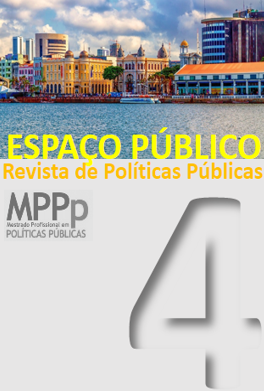Mobilização de capital social por meio da implementação do programa Um Milhão de Cisternas
Keywords:
Program, Cisterns, Social Capita, Living with the Semiarid, Social TechnologiesAbstract
With the advent of the paradigm of living with the semiarid, public policies to strengthen actions aimed at reducing the effects of drought were created, reflecting on the human and social development of affected communities, as well as on the permanence of families in the semiarid region. One such policy is the One Million Cistern Program (P1MC). Resulting from the articulation of civil society organizations and social movements, the Program aims at decentralization and democratization of water through the stock culture. Here, in addition to discussing the policy in question, we aim to highlight the mobilization of social capital through the stages that constitute and materialize the actions of P1MC.
References
BAQUERO. M. Construindo uma outra sociedade:O capital social na estruturação de uma cultura política participativa no Brasil. Revista de Sociologia ePolítica.Curitiba, n.21, p. 83-108, nov. 2003. Disponível em: http://dx.doi.org/10.1590/S0104-44782003000200007. Acesso em: 12/10/2019.
BOURDIEU, P. A Escola conservadora: as desigualdades frente à escola e à cultura. Tradução de Aparecida Joly Gouveia. In: NOGUEIRA, M. A.; CATANI, A.(Org.). Escritos de educação. 9. ed. Petrópolis: Vozes, 2007a.
CABRAL. R. 1959. Das ideias à ação, a Sudene de Celso Furtado–Oportunidade histórica e resistência conservadora. In: Cadernos do Desenvolvimento. Rio de Janeiro, ano 6, nº. 8, p. 17 -34, maio de 2011.
CARVALHO, R.V. et al. O Programa Um Milhão de Cisternas (P1MC):Uma Alternativa de Convivência com o Semiárido na Comunidade Agreste de Baixo –São Miguel/RN. Caminhos de Geografia. Uberlândia, v. 18, n. 61. p. 136–149, março de 2017. Disponível em: https://doi.org/10.14393/RCG186109. Acesso em 23/10/2019.
COLEMAN, J. Social Capital in the Creation of Human Capital. The American Journal of Sociology, Vol. 94, Supplement: Organizations and Institutions: Sociological and Economic Approaches to the Analysis of Social Structure (1988), pp. S95-S120.
FERRAREZI. E. Capital social: conceitos e contribuições às políticas públicas.Revista do Serviço Público. Brasília, Vol.54, nº4, p. 7-22,Out-Dez 2003. Disponível em:https://revista.enap.gov.br/index.php/RSP/article/view/273. Acesso em: 20/10/2019;
FUNDAÇÃO BANCO DO BRASIL. Cisternas de placas: Tecnologia social como política pública para o semiárido brasileiro /. 1. ed. Brasília: Fundação Banco do Brasil, 2014. Disponível em: https://www.issuelab.org/resources/19260/19260.pdf. Acesso em: 19/10/2019.
MALVEZZI, R. Semi-árido–uma visão holística. Brasília: Confea, 2007. 140p.
PUTNAM, R.D. Comunidade e democracia:a experiência da Itáliamoderna/Robert D. Putnam, com Robert Leonardi e Raffaella Y. Nanetti; traduçãoLuiz Alberto Monjardim. -5ed. -Rio de Janeiro: Editora FGV, 2006. 260p.
RUA, M. G. (1997). Análise de Políticas Públicas: conceitos básicos. Textos elaborados para o Curso de Formação para a carreira de Especialista em Políticas Públicas e Gestão Governamental. Brasília: ENAP/Ministério do Planejamento.
SCHERER-WARREN, I. Das Mobilizações as redes de movimentos sociais. Revista Sociedadee Estado. Brasília, v.21, n.1, p. 109-130, jan/abril. 2006.Disponível em: http://dx.doi.org/10.1590/S0102-69922006000100007.Acesso em: 20/10/2019.
SEBRAE.Tecnologias sociais:como os negócios podem transformar comunidades / Cuiabá, MT: Sebrae, 2017. 31p

